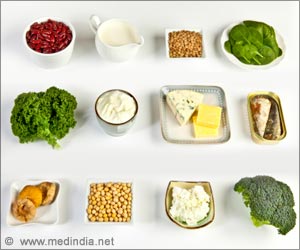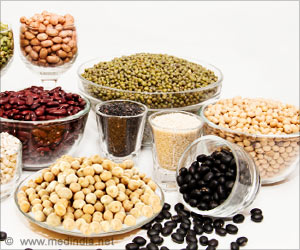Adults tend to eat less pizza and drink less soda as the price of these items increases, and their body weight and overall calorie intake also appear to decrease, according to a report
Adults tend to eat less pizza and drink less soda as the price of these items increases, and their body weight and overall calorie intake also appear to decrease, according to a report in the March 8 issue of Archives of Internal Medicine, one of the JAMA/Archives journals.
"To compensate for food environments where healthful foods (i.e., fresh fruits and vegetables) tend to cost more, public health professionals and politicians have suggested that foods high in calories, saturated fat or added sugar be subject to added taxes and/or that healthier foods be subsidized," the authors write as background information in the article. "Such manipulation of food prices has been a mainstay of global agricultural and food policy, used as a means to increase availability of animal foods and basic commodities, but it has not been readily used as a mechanism to promote public health and chronic disease prevention efforts."Kiyah J. Duffey, Ph.D., of the University of North Carolina at Chapel Hill, and colleagues assessed the dietary habits of 5,115 young adults (age 18 to 30) beginning in 1985 to 1986 and continuing through 2005 to 2006. Food price data were compiled for the same timeframe. Participants' height, weight and blood levels of glucose and insulin were also collected and a measure of insulin sensitivity was calculated.
Over the 20-year period, a 10-percent increase in price was associated with a 7-percent decrease in the amount of calories consumed from soda and a 12-percent decrease in the amount of calories consumed from pizza. A one-dollar increase in the cost of soda or pizza was also associated with a lower overall daily calorie intake, lower body weight and an improved insulin resistance score, and a one-dollar increase in the cost of both soda and pizza was associated with even greater changes in these measures.
The researchers estimate that an 18-percent tax on these foods would result in a decline of roughly 56 calories per person per day. These declines would amount to weight loss of approximately 5 pounds per person per year, with corresponding reductions in the risk of obesity-related diseases, they note.
"In conclusion, our findings suggest that national, state or local policies to alter the price of less healthful foods and beverages may be one possible mechanism for steering U.S. adults toward a more healthful diet," the authors write. "While such policies will not solve the obesity epidemic in its entirety and may face considerable opposition from food manufacturers and sellers, they could prove an important strategy to address overconsumption, help reduce energy intake and potentially aid in weight loss and reduced rates of diabetes among U.S. adults."(Arch Intern Med. 2010;170[5]:420-426. Available pre-embargo to the media at www.jamamedia.org.)
Editor's Note: Please see the article for additional information, including other authors, author contributions and affiliations, financial disclosures, funding and support, etc.
Advertisement
"Taxes are an appropriate method of correcting for health and other social costs not accounted for in the private market cost," write Mitchell H. Katz, M.D., of the San Francisco Department of Public Health, and Rajiv Bhatia, M.D., M.P.H, in an accompanying editorial. "State-level taxes exist on soda sold in grocery stores and vending machines in 34 and 39 states, respectively, and the mean taxes, currently applied for revenue generation, range from 3 percent to 4 percent. Not surprisingly, evidence on the efficacy of these modest surcharges on body weight is limited."
Advertisement
"In the end, putting our money where our mouth is means aligning our economic incentives so that we always serve up the healthful choice," they conclude.
Source-Eurekalert
SAV















